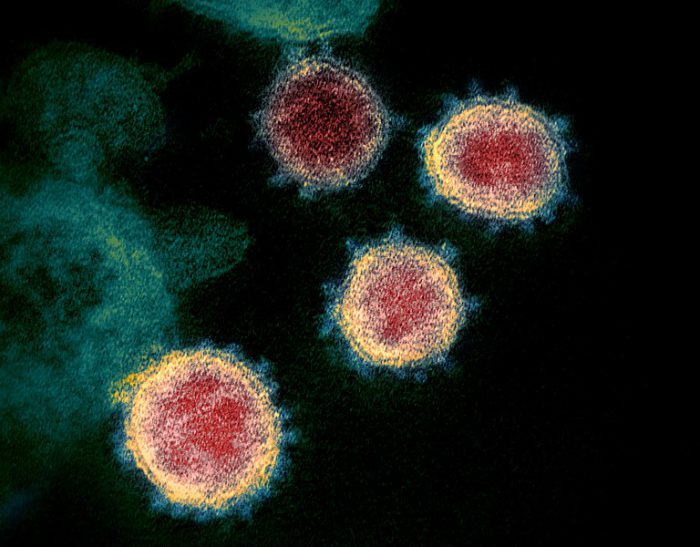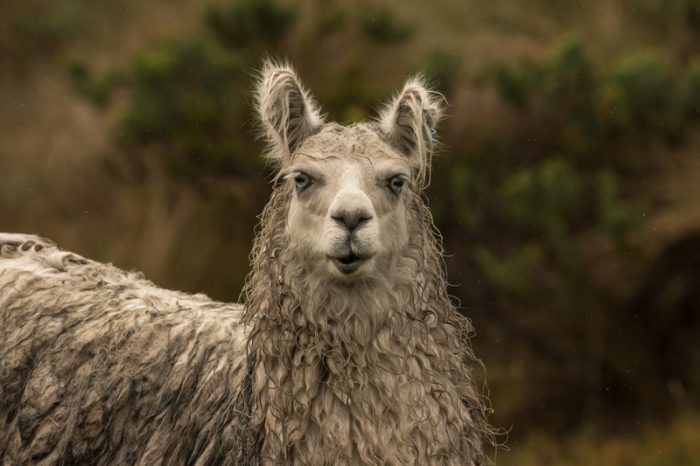Welcome back to our Science Odyssey Contest event, where we're posting STEM articles from May 2 to May 17. To enter the contest, you can find details at the bottom of this post.
Llamas are famous for a few things: their exceptionally soft wool, their use as pack animals, and their willingness to spit at anything (or anyone) that annoys them. But according to scientists, they may have another claim to fame.
Their blood might contain a way to stop COVID-19.
According to a statement from researcher Jason McLellan of the University of Texas at Austin says that llama blood has "one of the first antibodies known to neutralize SARS-CoV-2."
SARS-CoV-2? What's that you ask? And what is an antibody anyway? Let's dive in...
Corona family tree

Coronaviruses are named for their many spiky growths that look like crowns (corona means 'crown').(Wikimedia Commons/NIAID)
At this point, COVID-19 is a familiar term. But we often use it interchangeably with the term 'coronavirus' and that's not accurate.
COVID-19 is short for 'coronavirus disease 2019'. It refers to the disease caused by an infection of the virus. But the virus itself? That is SARS-CoV-2. And what's more, it's not the coronavirus.
SARS-CoV-2 belongs to a family of other coronaviruses, including SARS-CoV-1 and MERS-CoV. These viruses caused their own outbreaks in the past (SARS in 2002-2004 and MERS in 2012).
Outbreaks that led scientists to llamas.
Oh, you have the cutest little antibodies!
Llamas are cute and so are their antibodies. (Getty Embed)
So why llamas? Turns out that these mammals have something called nanobodies—super small antibodies in their blood. These extra-tiny buddies are able to get inside places that our natural human antibodies cannot.
Starting in 2016 (way before this current pandemic), scientists were experimenting with these nanobodies to see if they might be effective against coronaviruses like SARS-CoV-1 and MERS-CoV.
The researchers were getting ready to publish their findings... then COVID-19 was discovered. So the scientists went back to the drawing board to test llama nanobodies against it, too.
Antibody vs. vaccine
This llama research has been going on for years at the University of Belgium (shown here) and University of Texas at Austin. (Getty Embed)
Knowing that llama nanobodies are effective is a big step. But there's a lot more testing that needs to be done to prove that this treatment works in humans. The scientists behind this study think that an antibody treatment based on this could be ready in about a year.
But there's a difference between a vaccine and an antibody.
A vaccine exposes our body to something like the virus so that our immune systems know how to attack it with our own antibodies. (This why we become immune to things like chicken pox after we get it once—our body now recognizes it and knows how to stop it.) A successful vaccine prevents an infection from ever taking hold.
Antibody treatment is different. Here, we inject a new antibody into the body, so that it can fight a current infection instead of our immune system fighting it.
Both are important. And both take time to get right. But it's exciting to think that we may already know how to begin stopping not just SARS-CoV-2, but all coronaviruses.
Who's wearing the crown now, viruses? That's right. It's the llama.
Contest alert
Don't miss our Science Odyssey Contest. Click HERE TO ENTER.

 "I've got the cure for what now? In my blood, you say? Cool." (© Stef De Rijk - Dreamstime.com)
"I've got the cure for what now? In my blood, you say? Cool." (© Stef De Rijk - Dreamstime.com)










Cool
COOOOOOOOOOOOOOL!?
I kinda figured it would take longer for them to find a cure.
Obviously, you have to work hard it can’t just come out of no where!
😆
that’s cool! 😎 ❗ 😉 😮
😀 😛 cool!
Wow those llamas are AMAZING ❗ 😕 😯